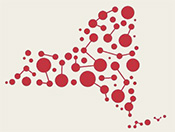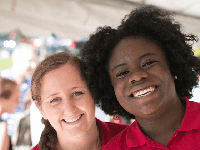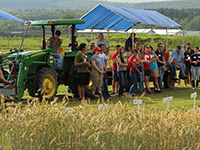Skill Level
Beginner, Intermediate, Advanced
Learner Outcomes
- Explore what the word justice brings to mind.
- Develop a collective understanding of what the term justice means.
Life Skills
Learning to learn, decision making, critical thinking, planning/organizing, communications, social skills, accepting differences, concern for others, empathy, sharing, contribution to group, teamwork
Time
5-10 minutes
Materials
- Writing utensils
- Sticky notes
Space
Comfortable place for youth to move around and whole group discussion. Wall or table available to place sticky notes.
Introduction
This activity will help ground the group in thinking about what the word justice means. We hear this word often in various situations, and yet, may not have paused to consider its meaning. It can also be helpful to think of the word in the context of its opposite: “injustice.” Injustice can be considered the lack of justice, violation of rights, unfair action, or treatment. Though creating a word cloud and group definition, we hope to have the group develop basic understanding of what justice is and what our basic human rights are.
Before the Activity
- Read through provided perspectives on justice and human rights and determine which could be appropriate to share with your group.
- Determine location where sticky notes will be posted for everyone in group to see.
Activity
Opening Questions
- Where have you heard or seen the word “justice” before?
- What types of justice movements, campaigns, and groups can you think of? What do these movements have in common? When have people heard about these movements? Under what circumstances?
Experience
- Create a word cloud with the group using sticky notes. Traditionally, a word cloud is an infographic with a jumble of words. The more a word is shared, the bigger and bolder it appears. In this exercise, we will use sticky notes to capture everyone’s words. Pass out 5-10 sticky notes to each person in the group.
- Ask the group what words come to mind when you hear the word “justice”? Have youth write down words or phrases that come to mind on each sticky note.
- After writing down their words, youth post their sticky notes on a designated location (could be a wall, board, or table).
- When all the sticky notes are put up, take a minute to cluster sticky notes that have the same word or phrase on them.
- Have the group look at the sticky notes. Share that justice is a word that can be interpreted in many ways. When exploring the food system, we will also reflect on “food justice.” The goal of this activity is to come up with a working definition of “justice” for our group. As a group, define what justice is. Below are a few perspectives on justice and human rights that can be shared with your group to stimulate creating a group definition:
•Martin Luther King, Jr. said “power without love is reckless and abusive, and love without power is sentimental and anemic. Power at its best is love implementing the demands of justice, and justice at its best is power correcting everything that stands against love.”
•Rhonda Magee, law professor and internationally recognized author, defines justice as “love in action for the alleviation of suffering.”
•Dolores Huerta, Labor Leader and Civil Rights Activist, said “the great social justice changes in our country have happened when people came together, organized, and took direct action. It is this right that sustains and nurtures our democracy today.”
•The United Nations states that: “Human rights are rights we have simply because we exist as human beings – they are not granted by any state. These universal rights are inherent to us all, regardless of nationality, sex, national or ethnic origin, color, religion, language, or any other status. They range from the most fundamental – the right to life – to those that make life worth living, such as the rights to food, education, work, health, and liberty.” - Ask group: What does this have to do with a food exploration, anyway? Why might a shared understanding of “justice” matter?
Reflection Questions
- Share a word to describe how you are feeling right now.
- Share with the group that this topic can sometimes bring up strong feelings—including the sense that there is so much to do to ensure justice for all. This is a common feeling. It is important to remember that you do not have to do it all. In fact, as we continue, we’ll be focusing on how to use our talents and strengths to make a difference.
Variations
-
Divide into smaller groups to discuss what justice is, and different justice movements, campaigns, and groups you are a part of or can think of. Come back to the larger group to share what you have discussed. Group discussion can be captured on a piece of paper or white board.
- If doing program virtually, word clouds can be created using Mentimeter or Word Art.
Learn More
- Dolores Huerta Dolores Huerta Foundation
- Food for the SOL: A Food, Justice and Community Building Curriculum for Youth
- Guidelines for Discussing Challenging Issues with Youth Learning to Give
- Sustainable Development Goals United Nations
- The Inner Work of Racial Justice by Rhonda V. Magee
- Universal Declaration of Human Rights United Nations
- What are human rights? United Nations Human Rights
- Where do we go from here? Martin Luther King, Jr.











